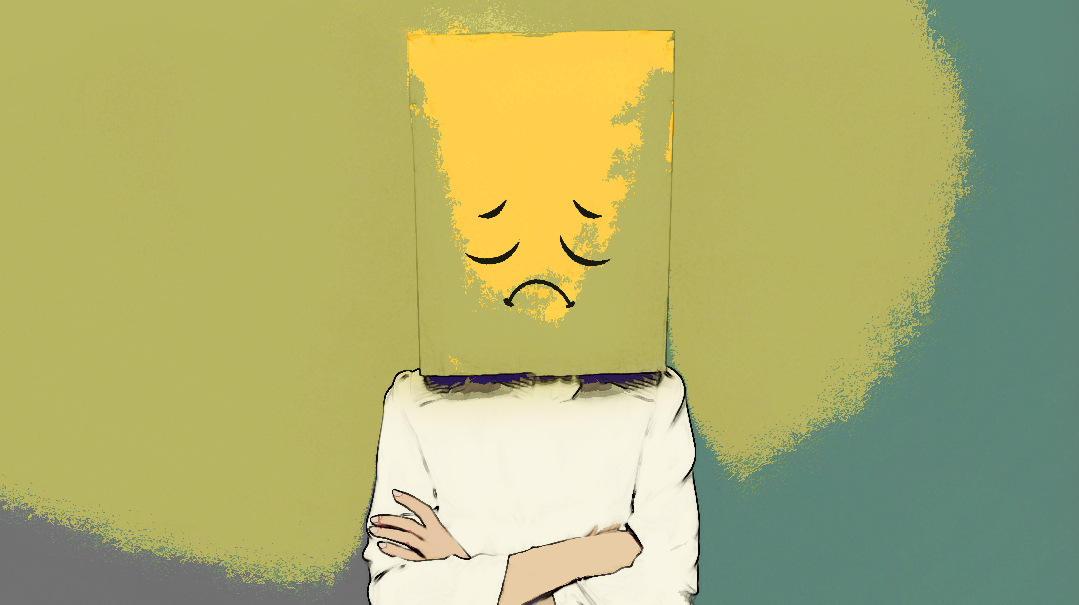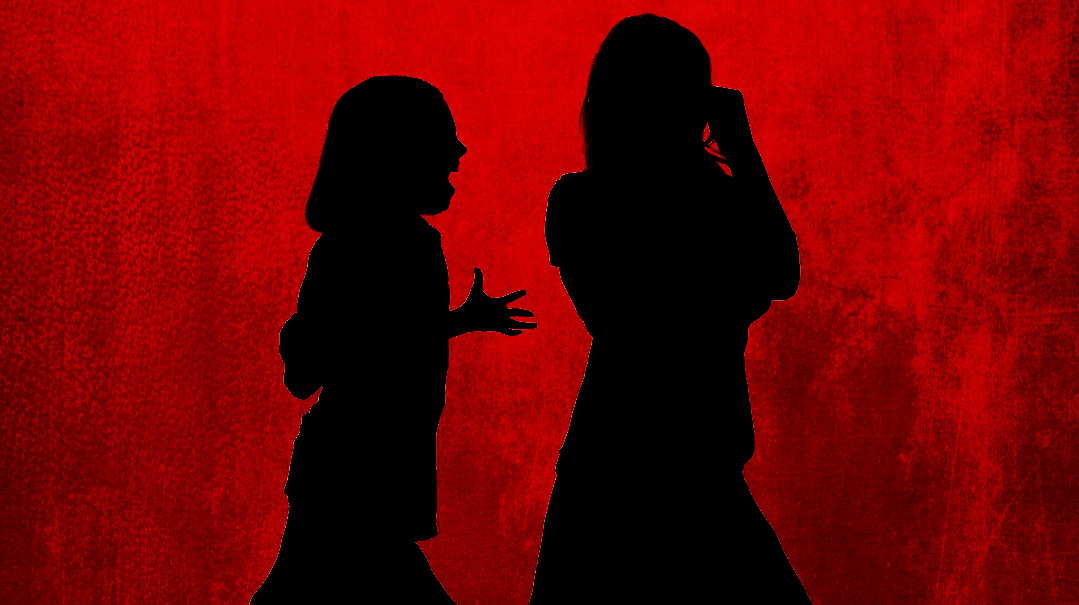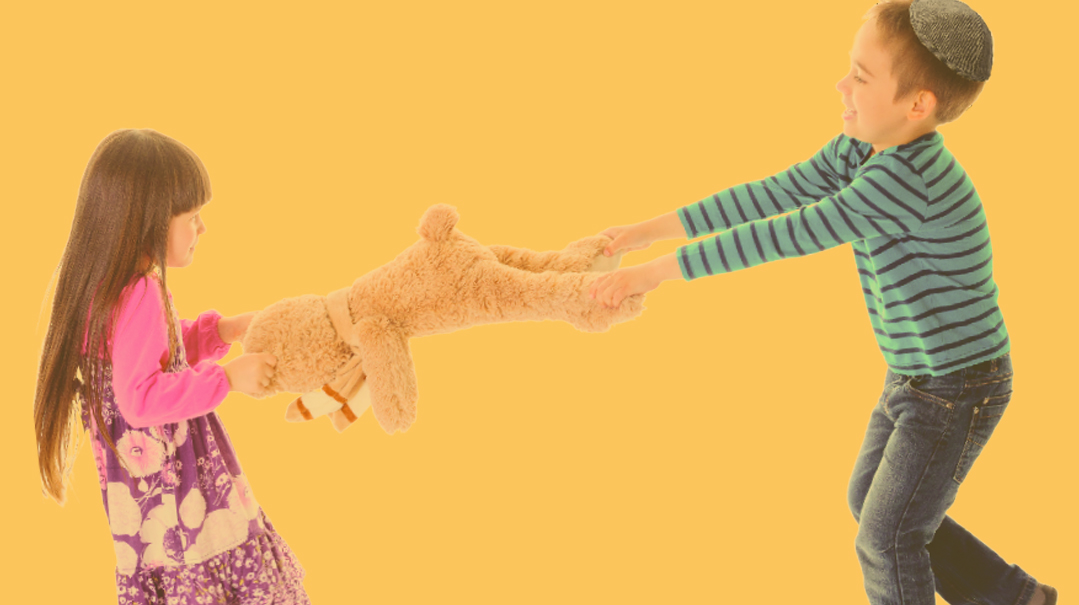Therapy Toolbox
| November 7, 2018
Goals: To help Ahuva better tolerate anxiety and give her tools to help with her specific fear.
Tools Used: Cognitive Behavioral Therapy, Mindfulness, and Exposure Therapy.
Dark Fears
Ahuva was a charmer, I could tell immediately. Her session was booked for 9:30 a.m.; she arrived at 9:25, notepad in hand. “I’m a good student,” she laughed. Ahuva made herself comfortable quickly, exuding confidence.
“So, I’m not embarrassed because, like, everyone has a therapist, ya know? But it’s so not me.”
“What isn’t ‘you’ about therapy?” I asked.
“The whole exposing myself to a stranger is weird, but I’m pretending we kinda know each other. It’s just that I literally have no issues.”
“Except?” I smiled, taking the bait.
“Except this teeny tiny issue that makes my entire life unmanageable.”
Usually, I do a formal intake: family genogram, psychosocial history, etc., but Ahuva clearly didn’t have patience for that. I waited for her to keep sharing, pen poised.
“I have a great marriage, awesome kids, I’m an event planner, and I have the best family. Everything is really good,” she took a breath, bracing herself. “But I can’t stay alone.” She slumped back on the couch.
“What do you mean, alone? Emotionally?” I asked.
“No! Physically. I am scared, terrified, to stay alone at night. My husband travels for work at least four times a month. I’ve tried everything and it’s only getting worse. It’s embarrassing! I’m 29 years old! I pressure my husband not to leave, and when he does, I’m awake all night in hyper-vigilant terror and then I am super tired and grumpy the next day. I wish there was a pill or something for this.”
I praised Ahuva for her courage to start the process and assured her that practical tools could be effective in controlling her anxiety.
Ahuva’s fears were deep-rooted. She shared her early memories of feeling scared at night: “I remember hearing a train and crying in my bed as a preschooler because I thought it was going off its tracks. I was scared of ‘creatures of the night,’ bears, robbers, the supernatural; scared of earthquake or fire.” For Ahuva, night always felt unsafe.
For years, Ahuva’s phobia lay dormant because of environmental buffers: Growing up, her large family was a hive of activity, in seminary she was surrounded by friends and roommates, and she married Yossi within months of returning from seminary. With Yossi’s kollel schedule, they didn’t travel much. Two years ago, Yossi started working and, with some lucrative promotions came a nonnegotiable travel schedule. Yossi was gone one to two nights a week. That’s when Ahuva decided she needed formal help.
“Even when Yossi’s home, I’m worrying about his next trip. When he’s gone, I’m terrified and barely functional.”
We discussed the end destination for our therapy map: Ahuva tolerating anxiety in more productive ways, and lessening the fear surrounding Yossi’s absences. The plan was for Ahuva to:
- Understand anxiety, specifically her phobia.
- Learn a different way of thinking about staying home alone (cognitive-behavioral shift).
- Tolerate her phobias more, through a combination of exposure therapy and mindfulness practice.
Understanding Anxiety
The first step to overcoming phobia is learning about anxiety and fears in general. The more knowledge Ahuva acquired, the more empowered she’d feel.
We broke down what makes her anxious:
“In the winter, I’m sure there will be a fire because of the heat, and in the summer, I’m sure we will get robbed. Sometimes it’s everything — the kids and fire and robbery and the dark and I just feel overwhelmed and panic.”
“Wow, that does sound overwhelming. Let’s break down each thought so we can identify your thinking process before it gets to the point of panic.” We spent some time verbally processing her catastrophic anticipations, and then moved to learning how to better manage those feelings. The goal for Ahuva was not necessarily total elimination of the phobia, but rather increased tolerance of her deep-rooted fears.
“Ahuva, based on what you’ve shared, you may be inclined toward anxiety. Developing tools to manage anxiety will have great long-term effects.”
“Why?” Ahuva asked. “Because if it’s not staying at home alone, then maybe I’ll develop an intense fear of Pesach cleaning or something?”
“I think you may be in good company with that,” I laughed, “but yes, your idea is on target. If we don’t attend to the core issues and don’t develop wide-reaching solutions, then the fear or anxiety just comes back in different forms.”
In one session, I asked Ahuva to share what happens on a typical evening when her husband is away: “I stay awake as long as possible, making lunches, cooking, cleaning, reading, and doing work. Around 1:30 or 2 a.m., I head upstairs, but I have to leave every single light on in the house.
“I skip my nightly shower in order to be listening to any noise in the house, and I sleep in a sweatshirt and slinky skirt in case an emergency occurs. I’ll read in bed, all the lights on, until I fall asleep, book in hand, usually around 3:30 a.m. My kids start jumping on my head at like 6 a.m. and I feel horrible the next day, foggy-brained from fatigue.”
When Ahuva thinks some danger is present (house fire, robber, medical crisis), she descends into feelings of panic. She legitimately smells smoke or hears robbers. “It starts with an intrusive thought,” Ahuva described, “and I get a sudden rush of intense fear — my heart starts to race, I get short of breath, sometimes I get dizzy or super-hot, a few times my hands got tingly, and I usually sweat or shake.” While frightening, the fact that panic attacks only happen when she’s alone at night is a sign that, with cognitive and emotional repair, the feelings will subside.
There are five different categories of specific phobias: animals (snakes, dogs, spiders), environment (fear of heights, fear of thunder/lightening), blood-injection injury (fear of medical procedures involving injections), situational (fear of confined spaces, fear of the dark), and other (fear of vomiting, choking, illness). Often individuals have multiple phobias. Ahuva’s specific phobia fell under the “situational” category.
We created a “fear ladder,” ranking specific situations from least to most scary:
We now had “bite-sized” goals for Ahuva to track her progress and gain insight.
Cognitive-Behavioral Shift
The next step was Ahuva thinking differently about staying home alone (cognitive-behavioral shift).
Thoughts, feelings, and behaviors interact and influence each other and can create a vicious cycle, I explained. Ahuva shared her cognitive process the day before Yossi leaves:
Initial thought: “I am going to be scared all night. I won’t sleep and I’ll be a zombie the next day. I hate Yossi’s work obligations! It’s not fair that I end up a mess.”
Feelings: nervous, angry, scared, resentful
Body Sensations: nausea, rapid heart rate, headache
Behavior: vent at Yossi, irritable with the kids
More thoughts: (spinning out of control to imagined reality) I’ll never be able to stay at home myself. G-d forbid something happens to Yossi, I would have to move in with my parents. I don’t want to live with my parents. This is a disaster.
Feelings: dread, sadness, anxiety
The cycle continues with negative behaviors following negative thoughts and unpleasant feelings, then catastrophic thinking and panic. When Ahuva “spins” the worst case/catastrophic thoughts, her anxiety would get even more unbearable. She couldn’t identify why or how this happened.
I gave Ahuva homework: keep a journal, a “thought record,” to gain insight into her moods and thoughts. Ahuva was to write down the time, the source, the extent/intensity, and how she responded. Identifying thought patterns and emotional tendencies starts the process of unravelling cognitive distortions.
I also asked Ahuva to write and reflect on her core beliefs using a five-category chart:
- Precipitating Events/Triggers: Yossi going out of town.
- Early Experiences: This includes any that contribute to the behavior — hearing scary stories at sleepovers, nighttime noises.
- Core Beliefs: These are relevant beliefs Ahuva has about her behaviors. “If I cannot stay alone at night without fear, I am lacking as a parent and adult.” Or “I’m fearful to be by myself, therefore inherently weak.”
- Old Rules for Living: Rules are if-then statements that provide judgement: If I cannot stay alone, I’m failing my kids,” or, “If Yossi doesn’t quit his job, then he must not really care about me.”
- Presenting Problems/Effects of old Rules: Are the rules working for Ahuva? Are they helping her overcome her fears? If not, Ahuva needed to ask herself a serious of questions to challenge negative thinking: Am I falling into a thinking trap, e.g., catastrophizing or overestimating danger? Have I confused a thought with a fact? What is the worst that could happen? and What would I tell a friend who had the same thought?
After several weeks, Ahuva reported feeling more in control of her thoughts and her actions.
Exposure Therapy and Mindfulness
As Ahuva’s anxiety level started falling, we moved to tolerating her phobia through a combination of exposure therapy and mindfulness practice. When Ahuva felt empowered to challenge herself, we took it rung by rung on her ladder, practicing each step several times until its fear level dropped to a more comfortable 2 to 3 in rank.
I worked with Ahuva to connect to a somatic/bodily experience through mindfulness practice. The purpose of mindfulness is to help people accept their experiences — including painful or uncomfortable emotions — rather than avoiding or denying them. By accepting one’s emotional or bodily reality, the emotions often become less persistent and intense.
Ahuva was hesitant — “I’m not a sit-still-and-breathe-type of person” — but willing.
In basic mindfulness meditation, Ahuva learned to sit quietly and focus on her natural breathing. We experimented with a range of exercises: noticing various body sensations (e.g., an itch or tingling), paying attention to every body part in succession from head to toe, different physical senses like taste and sight, and emotional sensations — naming emotions and allowing them to be present without judgment.
I gave Ahuva mindfulness homework, five minutes in the morning and in the evening. Practicing mindfulness helps one switch to the present, when anxiety or spinning thoughts or bodily panic reactions take over. Eventually, Ahuva was able to “switch on” mindful thinking even in session, and when we discussed core beliefs that caused her anxiety, she could identify the feelings and uncomfortable bodily sensations that accompanied her anxiety, and shift to a more mindful, present state.
At our final session, Ahuva was misty-eyed. “Yossi is gone three nights this week and I’m okay. Like not thrilled, but truthfully fine. I’ll go to sleep before midnight and my kids will have a functional mother.” Ahuva reflected with awe in her voice. “Like we discussed, I probably will make some concessions — like leaving on some lights — but I know I’ll shower and stick to my bedtime.”
Ahuva felt gratified that she’d come so far in just four months. Relapse is part of the process, I reminded her, and with her type-A rigidity, she’d have to accept progress and not perfection. She had the tools to guide her journey of growth and self-acceptance. As I walked her out the door, I could not help but notice how Ahuva carried herself proudly, head high, into the inky black night.
Negative Thinking
Ask yourself these questions to challenge your negative thoughts or self-talk:
- Am I falling into a thinking trap, e.g. catastrophizing or overestimating danger?
- What’s the evidence that this thought is true? What’s the evidence that this it is not true?
- Have I confused a thought with a fact?
- What would I tell a friend if he/she had the same thought?
- What would a friend say about my thought?
- Am I 100% sure that __________will happen?
- How many times has _________happened before?
- Is _________ so important that my future depends on it?
- What’s the worst that could happen?
- If it did happen, what could I do to cope?
- Is my judgment based on the way I feel instead of facts?
- Am I confusing “possibility” with “certainty”? It may be possible, but is it likely?
- Is this a hassle or a horror?
Breathe to Calmness
Why is Calm Breathing Important?
- When people feel anxious, they tend to “overbreathe” — taking quick, shallow breaths or even hyperventilating.
- “Overbreathing” can make you feel even more anxious (e.g., due to a racing heart, dizziness, or headaches).
- Calm breathing is a great portable tool to combat anxiety. It does require practice.
The purpose of calm breathing is not to avoid anxiety, but to help you “ride out” the feelings.
Calm breathing involves taking smooth, slow, and regular breaths. Sitting upright is usually better than lying down or slouching, because it can increase lung capacity for air. Take the weight off your shoulders by supporting your arms on a chair or in your lap.
1) Take a slow breath in through the nose, breathing into your lower belly (for about four seconds).
2) Hold for one to two seconds.
3) Exhale slowly through the mouth (for about four seconds).
4) Wait a few seconds before taking another breath.
About six to eight breathing cycles per minute is often helpful to decrease anxiety, but find your own comfortable breathing rhythm. These cycles regulate the amount of oxygen you take in so you avoid the fainting, tingling, and giddy sensations sometimes associated with “overbreathing.”
HINT: Breathe from your diaphragm or abdomen.
Your shoulders and chest should be fairly relaxed and still. If this is challenging, first try this exercise lying on the floor with one hand on your heart, the other on your abdomen. Watch the hand on your abdomen rise as you fill your lungs with air, expanding your chest. (The hand over your heart should barely move.)
Abby Delouya maintains a private practice and is employed as an adolescent and addictions counselor in schools in Montreal.
Disclaimer: This article is for psycho-educational purposes only, not diagnostic purposes, and does not serve as a replacement for individual therapy.
(Originally featured in Family First, Issue 616)
Oops! We could not locate your form.











